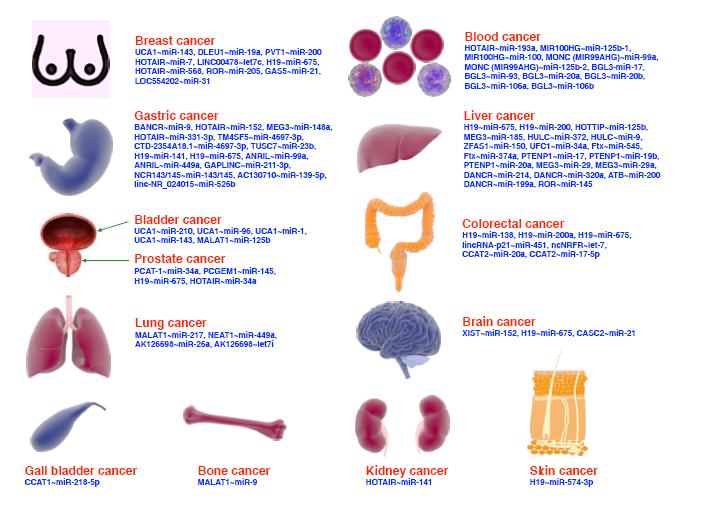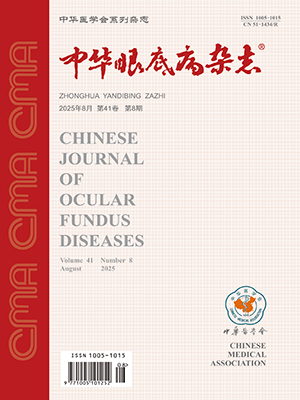| 1. |
Huang XF, Mao JY, Huang ZQ, et al. Genome-wide detection of copy number variations in unsolved inherited retinal disease[J]. Invest Ophthalmol Vis Sci, 2017, 58(1): 424-429. DOI: 10.1167/iovs.16-20705.
|
| 2. |
李文生, 郑钦象, 孔繁圣, 等. 遗传性视网膜疾病的基因研究进展[J]. 中华眼科杂志, 2010, 46(2): 186-192. DOI: 10.3760/cma.j.issn.0412-4081.2010.02.020.Li WS, Zheng QX, Kong FS, et al. Progress in gene studies of hereditary retinal diseases[J]. Chin J Ophthalmol, 2010, 46(2): 186-192. DOI: 10.3760/cma.j.issn.0412-4081.2010.02.020.
|
| 3. |
孙玺皓, 唐仕波, 陈建苏. CRISPR/Cas9基因编辑技术在遗传性视网膜疾病中的应用[J]. 中华实验眼科杂志, 2023, 41(9): 925-930. DOI: 10.3760/cma.j.cn115989-20201120-00787.Sun XH, Tang SB, Chen JS. Application of CRISPR/Cas9 genome editing technology in hereditary retinal diseases[J]. Chin J Exp Ophthalmol, 2023, 41(9): 925-930. DOI: 10.3760/cma.j.cn115989-20201120-00787.
|
| 4. |
许佳, 金子兵. 小胶质细胞对视网膜及神经系统疾病的监控作用[J]. 中华实验眼科杂志, 2022, 40(8): 758-764. DOI: 10.3760/cma.j.cn115989-20200918-00656.Xu J, Jin ZB. Monitoring function of microglia in retina and nerve system diseases[J]. Chin J Exp Ophthalmol, 2022, 40(8): 758-764. DOI: 10.3760/cma.j.cn115989-20200918-00656.
|
| 5. |
Li Q, Barres BA. Microglia and macrophages in brain homeostasis and disease[J]. Nat Rev Immol/Lunol, 2018, 18(4): 225-242. DOI: 10.1038/nri.2017.125.
|
| 6. |
Rathnasamy G, Foulds WS, Ling EA, et al. Retinal microglia-a key player in healthy and diseased retina[J]. Prog Neurobiol, 2019, 173: 18-40. DOI: 10.1016/j.pneurobio.2018.05.006.
|
| 7. |
Salter MW, Stevens B. Microglia emerge as central players in brain disease[J]. Nat Med, 2017, 23(9): 1018-1027.Salter MW, Stevens B. Microglia emerge as central players in brain disease[J]. Nat Med, 2017, 23(9): 1018-1027. DOI: 10.1038/nm.4397.
|
| 8. |
Butovsky O, Weiner HL. Microglial signatures and their role in health and disease[J]. Nat Rev Neurosci, 2018, 19(10): 622-635. DOI: 10.1038/s41583-018-0057-5.
|
| 9. |
Prinz M, Jung S, Priller J. Microglia biology: one century of evolving concepts[J]. Cell, 2019, 179(2): 292-311. DOI: 10.1016/j.cell.2019.08.053.
|
| 10. |
Nicolás-Ávila JA, Lechuga-Vieco AV, Esteban-Martínez L, et al. A network of macrophages supports mitochondrial homeostasis in the heart[J]. Cell, 2020, 183(1): 94-109. DOI: 10.1016/j.cell.2020.08.031.
|
| 11. |
Gosselin D, Skola D, Coufal NG, et al. An environment-dependent transcriptional network specifies human microglia identity[J/OL]. Science, 2017, 356(6344): eaal3222[2017-05-25]. https://pubmed.ncbi.nlm.nih.gov/28546318/. DOI: 10.1126/science.aal3222.
|
| 12. |
Smith AM, Dragunow M. The human side of microglia[J]. Trends Neurosci, 2014, 37(3): 125-135. DOI: 10.1016/j.tins.2013.12.001.
|
| 13. |
Yeh H, Ikezu T. Transcriptional and epigenetic regulation of microglia in health and disease[J]. Trends Mol Med, 2019, 25(2): 96-111. DOI: 10.1016/j.molmed.2018.11.004.
|
| 14. |
Gao ML, Zhang X, Han F, et al. Functional microglia derived from human pluripotent stem cells empower retinal organ[J]. Sci China Life Sci, 2022, 65(6): 1057-1071. DOI: 10.1007/s11427-021-2086-0.
|
| 15. |
Xu J, Yu SJ, Sun S, et al. Enhanced innate responses in microglia derived from retinoblastoma patient-specific iPSC[J]. Glia, 2024, 72(5): 872-884. DOI: 10.1002/glia.24507.
|
| 16. |
Deng WL, Gao ML, Lei XL, et al. Gene correction reverses ciliopathy and photoreceptor loss in iPSC-derived retinal organoids from retinitis pigmentosa patients[J]. Stem Cell Reports, 2018, 10(4): 1267-1281. DOI: 10.1016/j.stemcr.2018.02.003.
|
| 17. |
Xu J, Yu SJ, Jin ZB. Assembling retinal organoids with microglia[J/OL]. J Vis Exp, 2024, 2024 (209): E1(2024-11-11)[2021-07-26]. https://pubmed.ncbi.nlm.nih.gov/39141532/. DOI: 10.3791/67016. [published online ahead of print].
|
| 18. |
Li YP, Wang YT, Wang W, et al. Second hit impels oncogenesis of retinoblastoma in patient-induced pluripotent stem cell-derived retinal organoids: direct evidence for Knudson's theory[J/OL]. PNAS nexus, 2022, 1(4): pgac162[2022-08-17]. https://pubmed.ncbi.nlm.nih.gov/36714839/. DOI: 10.1093/pnasnexus/pgac162.
|
| 19. |
Paolicelli RC, Sierra A, Stevens B, et al. Microglia states and nomenclature: a field at its crossroads[J]. Neuron, 2022, 110(21): 3458-3483. DOI: 10.1016/j.neuron.2022.10.020.
|
| 20. |
Ramirez AI, de Hoz R, Salobrar-Garcia E, et al. The role of microglia in retinal neurodegeneration: Alzheimer's disease, Parkinson, and glaucoma[J/OL]. Front Aging Neurosci, 2017, 9: 214[2017-07-06]. https://pubmed.ncbi.nlm.nih.gov/28729832/. DOI: 10.3389/fnagi.2017.00214.
|
| 21. |
O'Koren EG, Yu C, Klingeborn M, et al. Microglial function is distinct in different anatomical locations during retinal homeostasis and degeneration[J]. Immunity, 2019, 50(3): 723-737. DOI: 10.1016/j.immol/Luni.2019.02.007.
|
| 22. |
Zhou W, Zhou Y, He J, et al. TREM2 deficiency in microglia accelerates photoreceptor cell death and immune cell infiltration following retinal detachment[J]. Cell Death Dis, 2023, 14(3): 219. DOI: 10.1038/s41419-023-05735-x.
|
| 23. |
Muffat J, Li Y, Yuan B, et al. Efficient derivation of microglia-like cells from human pluripotent stem cells[J]. Nat Med, 2016, 22(11): 1358-1367. DOI: 10.1038/nm.4189.
|
| 24. |
Abud EM, Ramirez RN, Martinez ES, et al. iPSC-derived human microglia-like cells to study neurological diseases[J]. Neuron, 2017, 94(2): 278-293. DOI: 10.1016/j.neuron.2017.03.042.
|
| 25. |
Gu C, Wang F, Zhang YT, et al. Microglial MT1 activation inhibits LPS-induced neuroinflammation via regulation of metabolic reprogramming[J/OL]. Aging cell, 2021, 20(6): e13375.1-05-08]. https://pubmed.ncbi.nlm.nih.gov/33964119/. DOI: 10.1111/acel.13375.
|
| 26. |
Qin L, Wu X, Block ML, et al. Systemic LPS causes chronic neuroinflammation and progressive neurodegeneration[J]. Glia, 2007, 55(5): 453-462. DOI: 10.1002/glia.20467.
|
| 27. |
Catorce MN, Gevorkian G. LPS-induced murine neuroinflammation model: main features and suitability for pre-clinical assessment of nutraceuticals[J]. Curr Neuropharmacol, 2016, 14(2): 155-164. DOI: 10.2174/1570159x14666151204122017.
|
| 28. |
Brown GC. The endotoxin hypothesis of neurodegeneration[J]. J Neuroinflammation, 2019, 16(1): 180. DOI: 10.1186/s12974-019-1564-7.
|
| 29. |
Xiao X, Liu Z, Su G, et al. A novel uveitis model induced by lipopolysaccharide in zebrafish[J/OL]. Front Immunol, 2022, 13: 1042849[2022-12-01]. https://pubmed.ncbi.nlm.nih.gov/36532084/. DOI: 10.3389/fimmu.2022.1042849.
|
| 30. |
Noailles A, Maneu V, Campello L, et al. Systemic inflammol/Lation induced by lipopolysaccharide aggravates inherited retinal dystrophy[J]. Cell Death Dis, 2018, 9(3): 350. DOI: 10.1038/s41419-018-0355-x.
|
| 31. |
Olivares-González L, Velasco S, Gallego I, et al. An SPM-enriched marine oil supplement shifted microglia polarization toward M2, ameliorating retinal degeneration in rd10 mice[J]. Antioxidants (Basel), 2022, 12(1): 98. DOI: 10.3390/antiox12010098.
|
| 32. |
Dorion MF, Yaqubi M, Senkevich K, et al. MerTK is a mediator of alpha-synuclein fibril uptake by human microglia[J]. Brain, 2024, 147(2): 427-443. DOI: 10.1093/brain/awad298.
|




